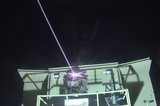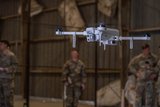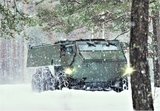LRDR passes preliminary design review
Lockheed Martin has announced that its Long Range Discrimination Radar (LRDR) has passed preliminary design review (PDR), clearing the way for detailed design to move ahead.
The LRDR is being developed by Lockheed Martin under contract with the Missile Defense Agency (MDA) to support a layered ballistic missile defence strategy to protect the US from ballistic missile attacks.
The PDR was awarded following the radar proving Technology Readiness Level (TRL) 6 in a scaled demonstration of the system's critical technology elements in a relevant end-to-end environment.
TRL 7 is expected to be achieved later in 2017, after which the programme will transition to manufacturing.
The system is being developed at Lockheed Martin's facility and a new solid state radar integration site, a self-funded test facility that will be used to demonstrate TRL 7 and provide significant risk reduction for development of LRDR and future solid state radar systems.
LRDR is a high-powered S-Band radar incorporating solid-state gallium nitride (GaN) components, with the additional capability to discriminate threats at extreme distances using the inherent wideband capability of the hardware coupled with advanced software algorithms.
The radar will be a key component of the MDA's Ballistic Missile Defense System, providing acquisition, tracking and discrimination data to enable separate defence systems to lock on and engage ballistic missile threats.
More from Defence Notes
-
![Irish Naval Service expands as the country looks to defence during EU presidency]()
Irish Naval Service expands as the country looks to defence during EU presidency
The Irish Naval Service has struggled to maintain capability, particularly in the face of lucrative private sector offers luring away personnel.
-
![Resilience, adaptiveness and collaboration vital for success in space (Studio)]()
Resilience, adaptiveness and collaboration vital for success in space (Studio)
Speakers at the Defence In Space Conference (DISC) 2025 highlighted the critical and evolving role of space in national security, defence and the global economy.
-
![Why the NORAD inventory might be the US and Canada’s Achilles’ heel]()
Why the NORAD inventory might be the US and Canada’s Achilles’ heel
Both the US and Canada operate Cold War-era capabilities which cannot defeat today’s and tomorrow’s threats.
-
![Companies’ results boom as countries dig deep to buy missiles and air defence systems]()
Companies’ results boom as countries dig deep to buy missiles and air defence systems
Air defence systems are continuing to appear top of countries’ shopping lists but broadly across different capabilities it is a sellers’ market, as demonstrated by backlogs and double-digit percentage point growth.
























